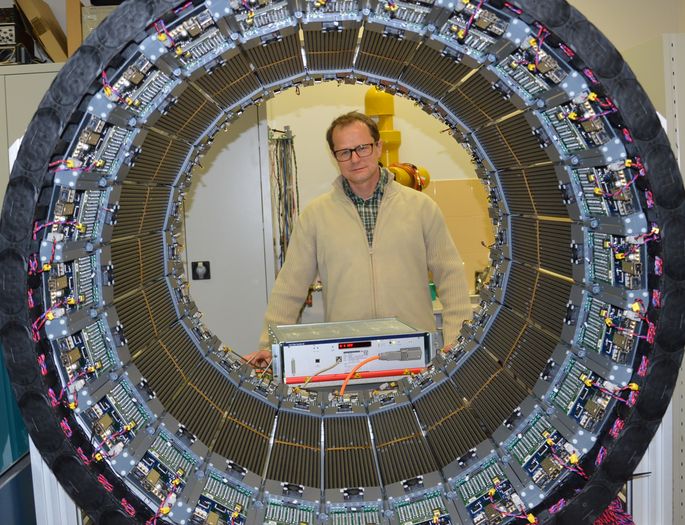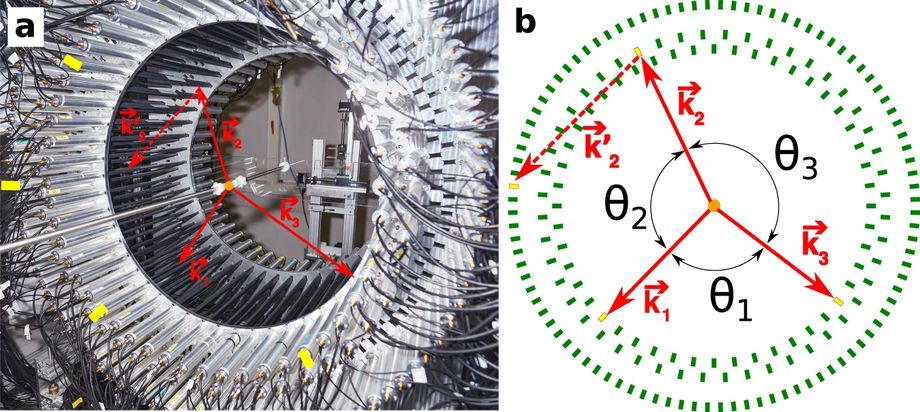
The journal Nature Communications has published the result of the world's most accurate test of symmetry between matter and antimatter in the positronium atom, performed by the J-PET Team led by Prof. Paweł Moskal from the JU Faculty of Physics, Astronomy and Applied Computer Science of the Jagiellonian University. The preparation of necessary equipment, experiments and subsequent data analysis took seven years.
In the paper Discrete symmetries tested at 10−4 precision using linear polarization of photons from positronium annihilations, scientists from the JU Institute of Physics described the results of symmetry tests between matter and antimatter by examining the polarisation of photons produced as a result of annihilation of an electron with a positron. The research project made use of positronium atoms made of electron and positron, the lightest components of matter and antimatter. Photons created in the annihilation of positronium have an energy one million times greater than visible photons and their polarisation cannot be studied using techniques known in optics and photonics.
The experiment used a method developed by Prof. Moskal and published in 2016 in Acta Physica Polonica B. The direction of photon polarisation is measured based on the scattering of photons on electrons in the plastic scintillators from which the J-PET tomograph is built.
The research is co-funded by the National Science Centre within the framework of the OPUS 18 call as well as the Centre for Theranostics – part of the Priority Research Areas qLife and SciMat at the Jagiellonian University. Prof. Paweł Moskal’s team proposed to conduct a dedicated high-precision experiment using innovative photon recording technologies in order to measure the light produced as a result of annihilation of an electron with a positron in order to test the predictions of the Standard Model or, alternatively, to discover the asymmetry between matter and antimatter in the electromagnetic sector.
We have designed and built a prototype of the world's first positron emission tomograph based on plastic scintillators. We have carried out preliminary tests showing the ability of the constructed prototype to measure the decay of positronium atoms into photons. We collected the first data and tested the symmetry between matter and antimatter with a precision several times higher in previous experiments. The launch of the prototype has already shown that the method we have developed allows us to carry out the proposed research with much higher precision than in the best previous experiments’, explained Prof. Paweł Moskal, adding that the main result of the project will be a deeper understanding of matter in the Universe and electromagnetic interactions responsible for the existence of atoms, molecules and even ourselves.

A photo of a tomograph and the representation of the experiment carried out by Prof. Paweł Moskal and his team





